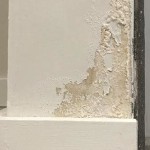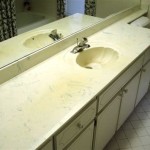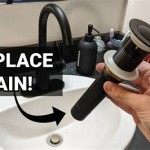How Much Is a Bathroom Renovation?
Bathroom renovations are a prevalent home improvement project, often undertaken to enhance functionality, modernize aesthetics, or increase property value. However, understanding the associated costs is crucial before embarking on such an endeavor. Bathroom renovation costs can vary considerably based on numerous factors, making it essential to conduct thorough research and planning to establish a realistic budget.
Accurately estimating the cost of a bathroom renovation requires considering the scope of the project, the materials selected, the labor required, and any unforeseen issues that may arise. A purely cosmetic upgrade will naturally differ significantly in price from a full-scale remodel that involves moving plumbing and electrical systems. This article will explore the key components influencing bathroom renovation costs, providing a comprehensive overview to aid homeowners in making informed decisions.
Key Cost Factors in Bathroom Renovations
Several core elements directly impact the overall expense of a bathroom renovation. These factors should be carefully evaluated during the planning phase to develop a budget that aligns with the desired outcome and financial constraints.
1. Scope of the Renovation: The extent of the renovation is arguably the most significant cost driver. A minor cosmetic upgrade, such as replacing a faucet, mirror, and light fixture, will inevitably cost less than a complete overhaul involving demolition and reconstruction. A comprehensive renovation can include relocating plumbing fixtures (toilet, sink, shower), changing the layout, updating electrical wiring, and replacing flooring and wall coverings. Each of these modifications adds complexity and, consequently, expense.
Cosmetic upgrades generally focus on enhancing the appearance of the existing bathroom without altering the underlying structure or systems. These may include repainting walls, replacing hardware (towel racks, cabinet pulls), and installing new accessories. Such projects can often be completed relatively quickly and with minimal disruption.
Conversely, a complete remodel involves significant structural changes and upgrades to essential systems. This may entail removing walls, reconfiguring the floor plan, installing new plumbing and electrical lines, and completely replacing fixtures. These projects are more time-consuming, labor-intensive, and naturally, more expensive.
The scope of the project dictates the quantity and type of materials needed. A partial renovation may only require a few new tiles or a new vanity top, while a complete remodel will necessitate a full suite of new fixtures, flooring, and wall coverings.
2. Materials and Fixtures: The selection of materials and fixtures plays a crucial role in determining the overall cost. Options range from budget-friendly standard models to high-end designer products. The price can differ dramatically depending on the quality, brand, and style chosen.
For example, flooring options can range from vinyl or laminate, which are relatively inexpensive, to ceramic or porcelain tile, which offer greater durability and aesthetic appeal but come at a higher cost. Natural stone flooring, such as marble or granite, represents the high end of the spectrum, providing a luxurious look but requiring a significant investment.
Similarly, the price of bathroom fixtures like toilets, sinks, and bathtubs can vary widely. Basic models are often affordable but may lack advanced features or stylish designs. Mid-range options offer a balance of quality, functionality, and aesthetics, while high-end fixtures boast premium materials, innovative technology, and designer styling, commanding a substantially higher price.
Vanities also contribute significantly to the overall cost. Stock vanities are pre-made and readily available, offering a cost-effective solution. Semi-custom vanities allow for some degree of personalization, while custom vanities are built to specific dimensions and specifications, providing a tailored look but at a higher price point.
Lighting fixtures also influence the price. Basic lighting can be inexpensive, but specialized lighting – such as recessed lighting, vanity lighting, and decorative fixtures – adds to the overall project cost.
3. Labor Costs: Labor typically accounts for a significant portion of the total bathroom renovation expense. The cost of labor varies based on the region, the contractor's experience and qualifications, and the complexity of the work involved.
Hiring licensed and insured contractors is essential to ensure the quality and safety of the work. While it may be tempting to cut costs by hiring less experienced or unlicensed workers, this can lead to problems down the line, such as substandard workmanship, code violations, and potential liability issues.
Plumbing work is typically one of the most expensive components of a bathroom renovation, especially if relocating fixtures is involved. Electric work also requires a qualified electrician to ensure compliance with safety codes and regulations.
Other labor-intensive tasks include demolition, framing, drywall installation, tiling, painting, and fixture installation. The cost of each task will vary depending on the complexity of the work and the contractor's hourly rate.
4. Unforeseen Issues and Contingency Funds: During a bathroom renovation, unforeseen issues can arise that add to the overall cost. It is prudent to set aside a contingency fund to cover unexpected expenses.
Common unforeseen issues include hidden water damage, mold growth, structural problems, and outdated plumbing or electrical systems. These issues may not be apparent until demolition begins, and addressing them can require additional labor and materials.
For example, if water damage is discovered behind the walls, it may be necessary to replace damaged framing or drywall. Mold remediation can also be a costly undertaking. Outdated plumbing or electrical systems may need to be upgraded to meet current code requirements.
A contingency fund of 10-20% of the total project cost is generally recommended to cover unforeseen expenses. This fund will provide a buffer to handle unexpected issues without derailing the project financially.
Breaking Down the Costs: Typical Expense Distribution
While the specific allocation of funds may vary depending on the project's scope and material choices, a typical bathroom renovation budget can be broken down into the following categories:
Demolition and Disposal: This category includes the cost of removing existing fixtures, flooring, and wall coverings, as well as disposing of the debris. This cost can range from 5-10% of the total budget.
Plumbing: Plumbing work, including relocating fixtures, installing new pipes, and connecting fixtures, can account for 20-30% of the total budget. The cost will be higher if significant plumbing modifications are required.
Electrical: Electrical work, including installing new wiring, outlets, and lighting fixtures, can range from 10-15% of the total budget. This cost will be higher if extensive electrical upgrades are necessary.
Flooring: Flooring materials and installation can account for 10-15% of the total budget. The cost will vary depending on the type of flooring chosen and the size of the bathroom.
Wall Coverings: Wall coverings, such as tile, paint, or wallpaper, can range from 5-10% of the total budget. The cost will vary depending on the type of material and the amount of wall space to be covered.
Fixtures: Fixtures, including toilets, sinks, bathtubs, and showers, can account for 20-30% of the total budget. The cost will vary widely depending on the quality, brand, and style of the fixtures chosen.
Vanity and Countertop: The vanity and countertop can range from 10-15% of the total budget. The cost will vary depending on the size, style, and materials chosen.
Labor: Labor costs, including contractor fees, plumber fees, and electrician fees, can account for 40-50% of the total budget. This is often the single largest expense.
Contingency: As mentioned previously, it is crucial to set aside 10-20% of the total budget as a contingency fund to cover unforeseen expenses.
Strategies for Cost Control
While bathroom renovations can be expensive, several strategies can help homeowners control costs without compromising on quality or functionality.
1. Careful Planning and Budgeting: Before beginning a bathroom renovation, it is crucial to develop a detailed plan and budget. This should include a clear scope of work, a list of materials and fixtures needed, and a realistic estimate of labor costs. Getting multiple quotes from different contractors can help to ensure a competitive price.
2. Retaining the Existing Layout: Relocating plumbing fixtures can significantly increase the cost of a bathroom renovation. Retaining the existing layout can save money on plumbing and electrical work.
3. Choosing Cost-Effective Materials: Selecting cost-effective materials can help to reduce the overall expense. For example, vinyl or laminate flooring can be a more affordable alternative to ceramic or porcelain tile. Stock vanities can be less expensive than custom vanities. Consider exploring alternatives that offer a similar aesthetic appeal at a lower price point.
4. DIY (Do-It-Yourself) Work: Performing some of the work yourself can save on labor costs. However, it is essential to be realistic about your skills and abilities. Some tasks, such as painting, demolition, and basic installation, may be suitable for DIY, while others, such as plumbing and electrical work, should be left to qualified professionals.
5. Shopping Around for Deals: Comparison shopping for materials and fixtures can help to find the best deals. Online retailers, home improvement stores, and clearance sales can offer significant discounts. Take the time to research different options and compare prices before making any purchases.
6. Prioritizing Needs over Wants: When budgeting for a bathroom renovation, it is essential to prioritize needs over wants. Focus on addressing essential repairs and upgrades, such as replacing a leaky toilet or fixing water damage, before indulging in luxury items. This helps keep costs within a reasonable range.
7. Avoiding Scope Creep: Scope creep, which refers to the gradual expansion of the project's scope, can quickly lead to cost overruns. It is important to stick to the original plan and avoid making unnecessary changes or additions along the way. If scope creep is unavoidable, discuss the potential cost implications with the contractor before proceeding.
Ultimately, understanding the factors influencing bathroom renovation costs and implementing effective cost-control strategies can empower homeowners to achieve their desired outcome within a reasonable budget. The initial investment of time and research in planning and budgeting will pay dividends in the long run, contributing to a smoother and more financially sound renovation process.

How Much Does A Bathroom Remodel Cost 2024 Data Angi

How Much Value A Bathroom Renovation Can Add To Your Home

How Much Does A Bathroom Renovation Cost In The Page

How Much Does A New Bathroom Cost In 2024 Victoriaplum Com

How Much Does A New Bathroom Cost In 2024 Checkatrade

Bathroom Renovation Cost How Much To Budget For A Remodel

How Much Does A Bathroom Remodel Cost In 2024 Checkatrade

Understanding Small Bathroom Remodel Costs And How To Save

How Much Does A New Bathroom Cost Big

Bathroom Remodeling Costs In Dc 2024 Sweeten
Related Posts







